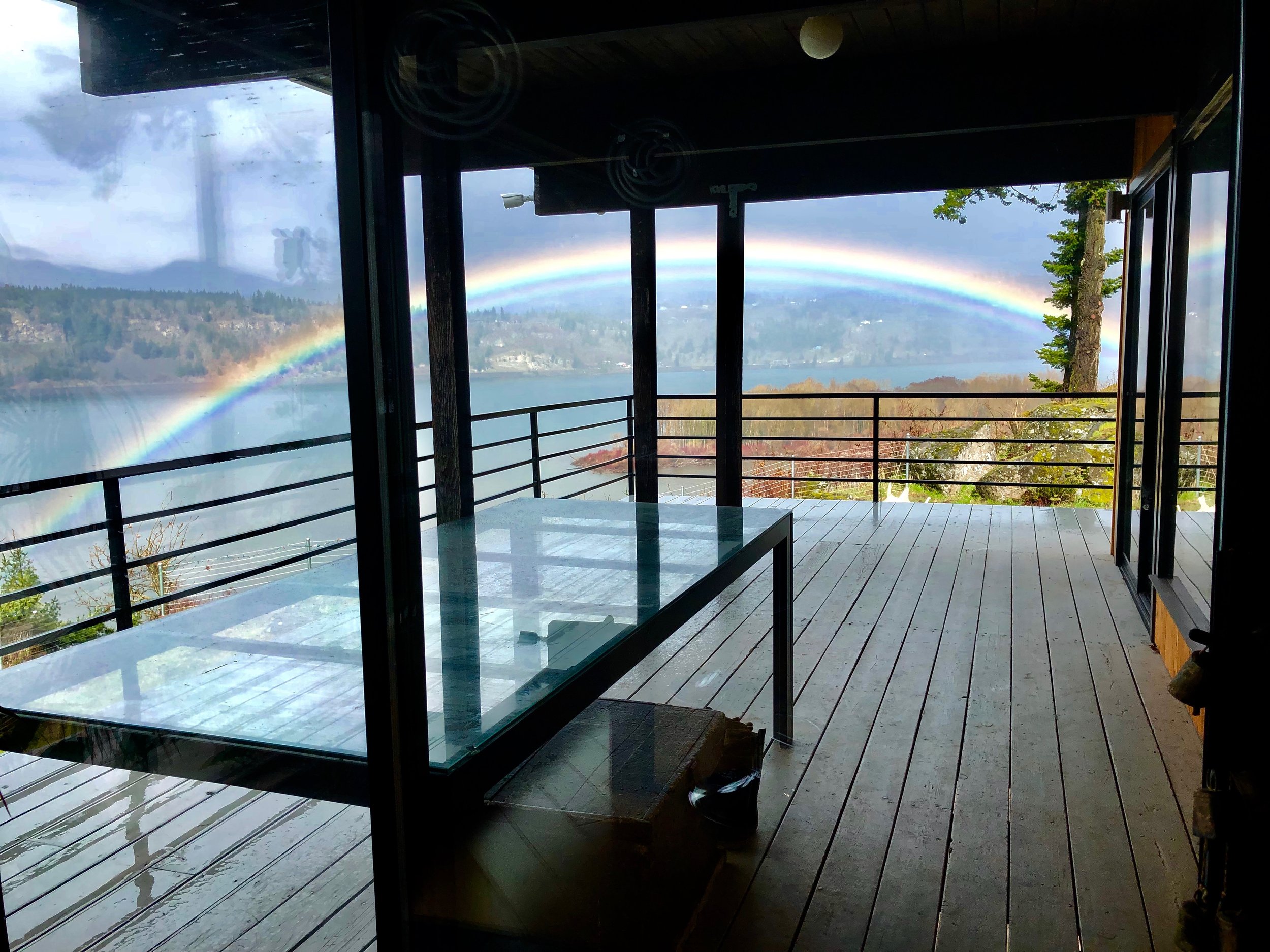Studio Visit
Studio Visit
Laurie Balmuth
Studio Visit
Q. What motivates you?
A. Unraveling an image. Making something out of chaos. Human connection.
Q. Tell us about this series of work.
A. These paintings spring from my study of Asian calligraphy and hours and years of drawing from life. My natural habitat is the art museum. I think I try to absorb the essence of the masters through my pores and the air I breathe in there. I am trying to make an honest picture.
Q. When did you start calling yourself an artist?
A. I am a painter.
Q. Tell us about where you live and how it influences your work ?
A. I live in a place of intense natural phenomena and connection to the wilderness and the elements. It is very windy here and the weather systems are localized and sudden. There are mountains and cliffs and a mile wide river. The landscape changes from heavy coniferous forest to desert in a matter of a few miles. God’s creation heals. Visual expression is another source of healing. We exist to heal our wounds and the wounds of others.
Q. Tell us about your studio practice ?
A. I take a lot of photos. I examine them looking for ones I feel will give me interesting shapes. I sometimes make a number of large line drawings in a series especially intended to develop into paintings. But I only work on one painting at a time. I paint and look and paint some more. I like to refine the color design and clean up any scraggly transitions.
Q. What in the painting process drives the work ? Method, material, an idea or something else?
A. The method of searching and discovery carries through all phases. I strive to put as much of myself into the work as I can. The drawing is a kinetic thing. The color achieved with good quality oil paint transmits pure joy and the color dialogue within the painting gives it internal light. I don't have an idea. The painting is it's own idea. I think of my paintings as beloved children I am helping become their best selves.
Q. Do you find art making therapeutic ?
A.The process of art making is healing. We all have wounds. I have learned to accept this.
Q. What are you most proud of ?
A. I am thorough and strive not to gloss over anything important in my work; I want to get to the root of the matter.
Q. If you could have drink with one artist who would it be?
A. Dana Schutz.
Q. What motivates you ?
A. It’s hard to say. I think making order out of chaos is a prime motivator. I’d like to have control of something but then the opposite happens and the work takes control. I suppose neurosis motivates me.
Q. What is the artist living or dead that you feel a great connection to ?
A. Wang Doh
Q. What is the one thing you've wanted to do but have been afraid to try ?
A. Backpacking through Eastern Europe.
Q. What's next ?
A. Make plans and carry the idea forward.
My painting process is completely intuitive. I am attracted to an image. I draw from this image.
I am continually creating a problem or a puzzle that I must solve. The material of oil on panel allows scraping and rubbing and the development of layers and a distressed surface. I seek to emulate natural processes such as rust or decaying organic matter. These irregular patterns, created by chance are, to me, more evocative of nature than the most realistic attempts to depict water, rocks or trees. I show the natural processes largely by emulating them. My painting surfaces feel to me like the effects of wind and water erosion and microbial action.
The layering of oil paint on panel creates a sense of atmosphere and space. Some elements are drawn representationally to inhabit and anchor the space..There is a feeling of moving toward a light source or an opening. I can feel the ground under my feet while my consciousness floats free. My painting goal is to create a meditative visual space.
The intent and the steps taken to create each painting are the same but the results differ greatly in style and subject matter. My work at first appears varied and without clear direction but understood in this way presents a coherent whole perhaps not immediately grasped.



